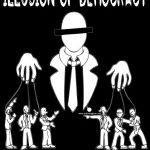Corruption, Soaring Food Prices and Unemployment
As I documented in February, soaring food prices, corruption and youth unemployment are leading causes of the “Arab Spring” of unrest in the Middle East.
And I’ve repeatedly pointed out that it is a global – not Arab – revolution:
The worldwide riots are not mysterious or unforeseeable. They’ve been predicted for years, and are a direct result of the bad policy choices made by most nations worldwide.
***
Nations around the world decided to bail out their big banks instead of taking the necessary steps to stabilize their economies …. As such, they all transferred massive debts (from fraudulent and stupid gambling activities) from the balance sheets of the banks to the balance sheets of the country.
The nations have then run their printing presses nonstop in an effort to inflate their way out of their debt crises, even though that effort is doomed to failure from the get-go.Quantitative easing by the Federal Reserve is obviously causing food prices to skyrocket worldwide (and see this, this and this).
But the fact is that every country in the world that can print money … has been printing massive quantities of money.
***
Moreover, the austerity measures which governments worldwide are imposing to try to plug their gaping deficits (created by throwing trillions at their banks) are causing people world-wide to push back.
As I warned in February 2009 and again in December of that year:
Numerous high-level officials and experts warn that the economic crisis could lead to unrest world-wide – even in developed countries ….
Unemployment is soaring globally – especially among youth.
And the sense of outrage at the injustice of the rich getting richer while the poor get poorer is also a growing global trend.
Countries worldwide told their people that bailout out the giant banks was necessary to save the economy. But they haven’t delivered, and the “Main Streets” of the world have suffered.
As former American senator (and consummate insider) Chris Dodd said in 2008:
If it turns out that [the banks] are hoarding, you’ll have a revolution on your hands. People will be so livid and furious that their tax money is going to line their pockets instead of doing the right thing. There will be hell to pay.
Of course, the big banks are hoarding, and refusing to lend to Main Street. In fact, theyadmitted back in 2008 that they would. And the same is playing out globally.
In March, Council of Foreign Relations research associate Matthew Klein noted the parallels between soaring youth unemployment in corrupt Arab countries and the U.S.:
We all enjoy speculating about which Arab regime will be toppled next, but maybe we should be looking closer to home. High unemployment? Check. Out-of-touch elites? Check. Frustrated young people? As a 24-year-old American, I can testify that this rich democracy has plenty of those too.
About one-fourth of Egyptian workers under 25 are unemployed, a statistic that is often cited as a reason for the revolution there. In the United States, the Bureau of Labor Statistics reported in January an official unemployment rate of 21 percent for workers ages 16 to 24.
***
The true unemployment rate for young graduates is most likely even higher because it fails to account for those who went to graduate school in an attempt to ride out the economic storm or fled the country to teach English overseas. It would be higher still if it accounted for all of those young graduates who have given up looking for full-time work, and are working part time for lack of any alternative.
***
The uprisings in the Middle East and North Africa are a warning for the developed world. Even if an Egyptian-style revolution breaking out in a rich democracy is unthinkable, it is easy to recognize the frustration of a generation that lacks opportunity. Indeed, the “desperate generation” in Portugal got tens of thousands of people to participate in nationwide protests on March 12. How much longer until the rest of the rich world follows their lead?
Richard Wilner noted in 2009 that less than half of 16-24 year old Americans had jobs:
The number of young Americans without a job has exploded to 53.4 percent — a post-World War II high, according to the Labor Dept. — meaning millions of Americans are staring at the likelihood that their lifetime earning potential will be diminished and, combined with the predicted slow economic recovery, their transition into productive members of society could be put on hold for an extended period of time.
The number represents the flip-side to the Labor Dept.’s report that the employment rate of 16-to-24 year olds has eroded to 46.6 percent — the lowest ratio of working young Americans in that age group, including all but those in the military, since WWII.
And as I noted last year, some groups in America are experiencing Depression-level unemployment:
34.5% of young African American men were unemployed in October 2009.
As the Center for Immigration Studies noted last December:
Unemployment rates for less-educated and younger workers:
- As of the third quarter of 2009, the overall unemployment rate for native-born Americans is 9.5 percent; the U-6 measure shows it as 15.9 percent.
- The unemployment rate for natives with a high school degree or less is 13.1 percent. Their U-6 measure is 21.9 percent.
- The unemployment rate for natives with less than a high school education is 20.5 percent. Their U-6 measure is 32.4 percent.
- The unemployment rate for young native-born Americans (18-29) who have only a high school education is 19 percent. Their U-6 measure is 31.2 percent.
- The unemployment rate for native-born blacks with less than a high school education is 28.8 percent. Their U-6 measure is 42.2 percent.
- The unemployment rate for young native-born blacks (18-29) with only a high school education is 27.1 percent. Their U-6 measure is 39.8 percent.
- The unemployment rate for native-born Hispanics with less than a high school education is 23.2 percent. Their U-6 measure is 35.6 percent.
- The unemployment rate for young native-born Hispanics (18-29) with only a high school degree is 20.9 percent. Their U-6 measure is 33.9 percent.
No wonder Chris Tilly – director of the Institute for Research on Labor and Employment at UCLA – says that African-Americans and high school dropouts are experiencing depression-level unemployment.
And as I have previously noted, unemployment for those who earn $150,000 or more is only 3%, while unemployment for the poor is 31%.
And food prices are soaring in the U.S. As CNN noted last month:
According to the latest government figures, the consumer price index for food at home increased by 60 basis points year-over-year to 6% versus the 10 basis point gain in food away from home CPI inflation to 2.7%.
Food inflation is now the most important household expense, according to Wal-Mart’s (WMT) commentary during its earnings call last month. Food prices, according to the Bureau of Labor Statistics, continue to accelerate higher.
(And inequality in America is worse than Egypt, Tunisia, Yemen or most Latin American banana republics).
No wonder protesters are saying that “Spring” has spread to America:

Not Just Wall Street … Corrupt Government Is At Least Half the Problem
Because government policy is ensuring high unemployment, it is not surprising that the Americanprotesters are angry at the Federal Reserve and other government institutions, and not just the big Wall Street banks.
Remember, Bush and Obama’s economic policies are virtually indistinguishable. Indeed, Obama actuallylikes high unemployment.
And as I noted in 2009, the government created the giant banks:
As MIT economics professor and former IMF chief economist Simon Johnson points outtoday, the official White House position is that:
(1) The government created the mega-giants, and they are not the product of free market competition
(2) The White House needs to “regulate and oversee them”, even though it is clear that the government has no real plans to regulate or oversee the banking behemoths
(3) Giant banks are good for the economy
Of course, the government has also made it policy to cover up fraud and protect the fraudsters, and so the free market has no chance to punish fraud or cleanse wrongdoing from the system.
Without government-created moral hazard emboldening casino-style speculation, corruption of government officials, creation of a system of government-sponsored rating agencies which had at its core a model of bribery, and other government-induced distortions of the free market, things wouldn’t have gotten nearly so bad.
Indeed, the government is so corrupt that the head of the economics department at George Mason University says that D.C. politicians are worse than prostitutes … they are “pimps”, since they are pimping out the American people to the financial giants.
And while co-option of government by the big banks is a huge problem, it is also true that corruption in government leads to corruption in the private sector. See this and this. The U.S. has truly become abanana republic, just like the worst Latin American countries.
So anyone who thinks that government would solve all of our problems if it were only freed from obstructionists is only seeing half the problem, and is falling for the oldest trick in the book … the ole’divide and conquer strategy.
source: washingtonsblog.comsource:













Adauga comentariu